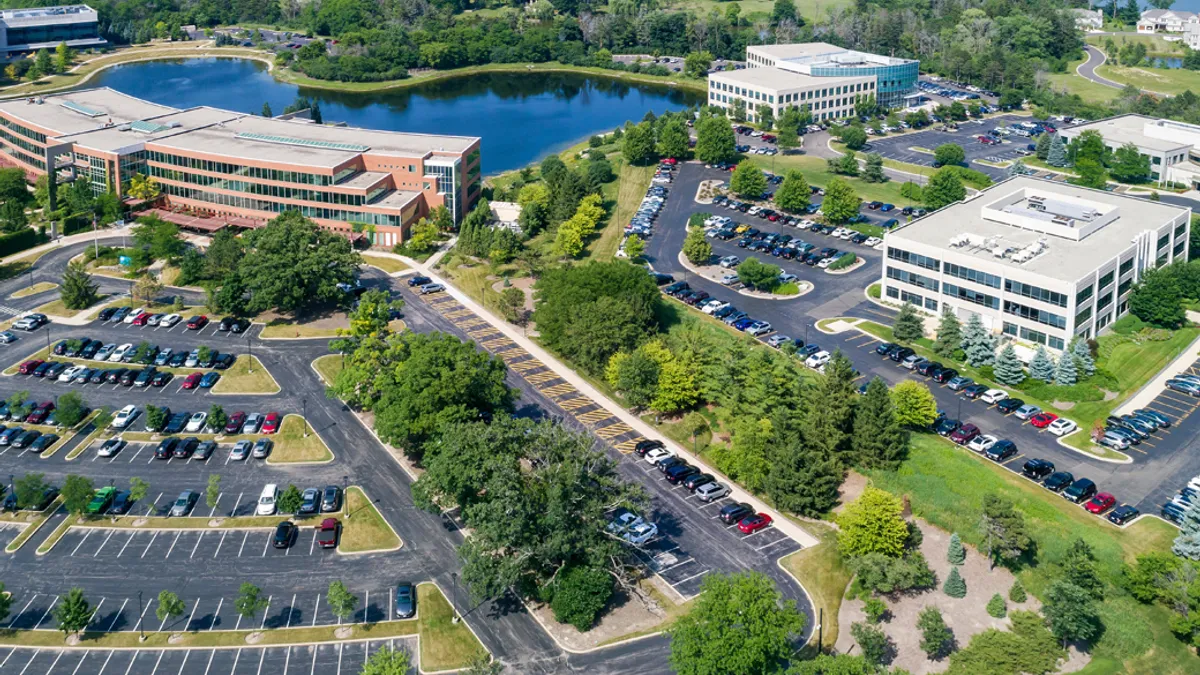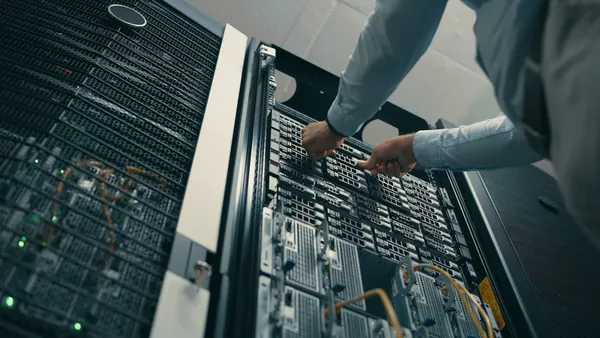Revolutionizing facility performance is no longer just a luxury—it's necessary in today’s business environment. Plus, maintaining efficiency, sustainability and occupant comfort can be especially daunting for those managing multiple facilities
However, with the latest cutting-edge smart and connected building technologies, businesses are transforming how their facilities’ assets, systems and even employees coordinate for success.
The problem at hand
Let’s start at the top. Facilities are an ecosystem of myriad building systems, management processes and, increasingly, technology that ties them all together.
- Facility asset data management - This type of platform aggregates facility asset data to inform capital expense planning for repairs and replacement. From roof defects to potholes in the parking lot to types and ages of HVAC equipment, there’s a lot of actionable data at the fingertips of a facility manager.
- BAS/BMS - For things in the building that use electricity, many businesses have adopted Building Automation or Building Management Systems. These two terms are often used interchangeably, but in short, they monitor building temperatures, airflow, electrical use and other data points. They also control the setpoints and can make adjustments throughout the day for the amount of fresh air to be introduced to the building, the humidity and the temperature.
- CMMS - A Computerized Maintenance Management System helps organizations manage and optimize maintenance activities such as work order management and scheduling preventive maintenance.
The challenges businesses face without integrated building solutions
Businesses with several facilities within their portfolios can struggle to manage and optimize their operations. Here are some of the major challenges they encounter:
- Outdated systems and manual processes: These systems often lead to inefficiencies, high maintenance costs and operational delays. Manual processes are time-consuming and prone to errors, resulting in increased labor costs and reduced productivity. Outdated systems lack the advanced features needed to streamline operations and improve efficiency.
- Lack of integration between BMS and CMMS: Without integration, facility managers must manually transfer data between systems, increasing the risk of errors and omissions. This lack of cohesion prevents a holistic view of facility operations, hindering the ability to make informed decisions and respond quickly to maintenance issues.
- High costs of upgrading and maintaining outdated systems: Businesses face significant expenses in keeping outdated systems operational, which can strain budgets and resources. Additionally, the capital investment required to upgrade to modern systems can be prohibitive, leading many organizations to delay necessary improvements.
- Difficulty in leveraging advanced technologies: Outdated systems hinder the adoption of advanced technologies like AI, which can provide valuable insights for predictive maintenance and operational efficiency. Without these technologies, businesses miss opportunities to optimize performance and reduce downtime, limiting their ability to stay competitive.
- Attracting and retaining new talent: Valuable institutional knowledge is lost as experienced personnel retire, and the need to attract, train and retain new talent that can readily operate those systems becomes dire.
- The status quo of optimization: Even organizations with BAS and related systems in place know that having these systems does not inherently mean they're being used effectively. Without periodic reviews, misalignments between a campus’ operations and programmed sequences of operation often result in wasted budget dollars.
What smart connected buildings are, and how they can help
Implementing integrated building solutions at scale is well within the capabilities of any organization. It starts with understanding where the business is right now, where it wants to be and what needs to happen to get there. By leveraging advanced technologies and strategic planning, businesses can overcome facility management challenges and achieve optimal performance.
Solutions include:
- No and low-cost opportunities: Starting with consulting projects can help identify opportunities for improvement and provide a clear roadmap for implementation without a significant upfront investment.
- Utility bill management: Utility bill management is crucial for consolidating and sorting an amount of data that would be a monumental task when done manually. It helps businesses manage energy costs effectively and ensures compliance with local laws and climate commitments.
- Advanced analytics and control solutions: Analytics and controls enable proactive maintenance, reducing downtime and improving efficiency. By leveraging real-time data, businesses can stay ahead of maintenance issues and optimize performance.
These solutions allow for incremental implementation that enables businesses to start small and scale up as needed.
How to implement these solutions into your energy management strategy
The right strategy ensures that the right solutions are implemented for your organization at the right time, steering you toward success. Here are the key steps:
- Assessment and consulting: Conduct a thorough assessment of your current systems and processes to create a tailored roadmap addressing specific challenges and goals.
- Pilot projects: Implement pilot projects to test and refine solutions, reducing risks before full-scale implementation.
- Continuous monitoring and improvement: Use real-time data to enable proactive maintenance and optimize performance for long-term success.
In conclusion
Integrated building solutions offer businesses the means to future-proof their facilities from unforeseen maintenance challenges and inevitable management practices. With the proper guidance and understanding of your facilities, they can be readily implemented into your portfolio’s energy management strategy.
Contact Mantis Innovation today to learn how you can transform your portfolio’s facility performance










